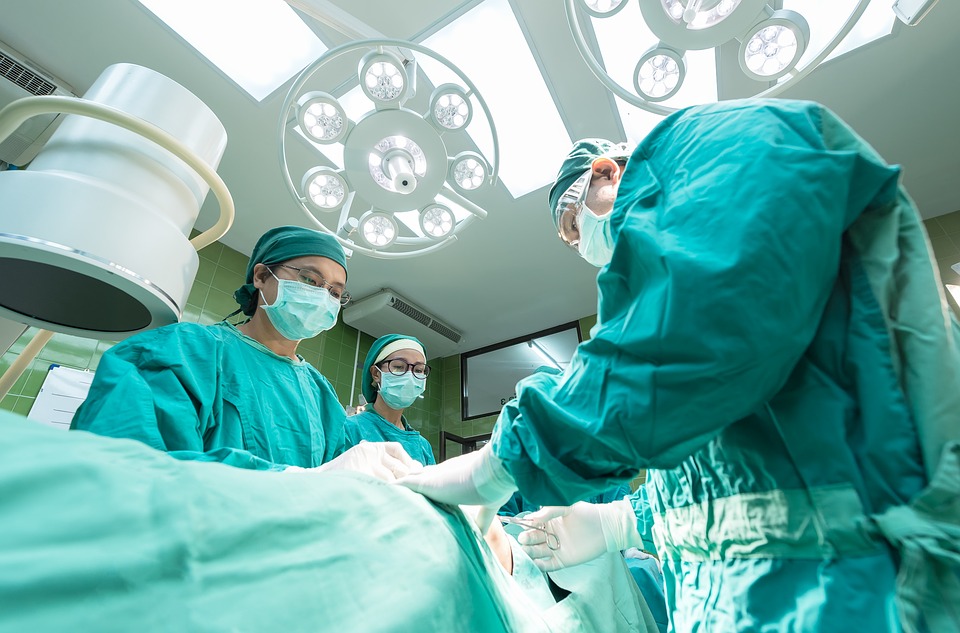How does organ donation work?
by Scott Dutfield · 08/04/2019

Discover the science behind the surgical swaps that save lives
It’s often a misconception that those who require an organ transplant have in some way damaged their own body, for example, by smoking or drinking excessive alcohol. In some cases, genetics play a cruel role in the development of certain conditions, such as cystic fibrosis, meaning that transplants become the only treatment option. There are two main branches of the transplant process: organs donated by a living person, or those from a donor who has been declared brain dead.
Living donors can obviously only donate organs that they can live without, such as a single kidney or part of their liver. However, vital organs such as the heart and lungs are recovered from a patient whose brain has irreversibly lost all function, known as brain death. Being declared brain dead could mean that vital organs are still viable and undamaged. In order to maintain their viability, a ventilator artificially pumps oxygen into the deceased patient’s lungs. As the heart does not require the brain in order for it to beat, blood continues to circulate and deliver oxygen to the organs. These organs can then be removed by surgeons and transplanted into another patient who is a match.
Finding that match, however, can be a complicated undertaking and can differ depending on the organ. More than just a compatible blood type, factors such as tissue type, body size and the patient’s condition severity can determine who receives organs.
Once a donor and patient are matched and the transplant surgery has been a success, an internal battle begins. Organ rejection can threaten the success of any transplant. This immune response occurs because a patient’s system does not recognise the antigens (proteins) from the new organ. Instead, the new organ is viewed as a threat and the immune system attacks it. This can be prevented by trying to match a patient’s blood as closely as possible to the donor’s, and by using immunosuppressant medication to restrict the immune response.
From A to AB
The journey from diagnosis to donation and recovery
There are a whole host of conditions where a transplant is necessary to treat a patient. Coronary artery disease, diabetes mellitus or cystic fibrosis are just some of the conditions that could warrant a transplant.
After the point of diagnosis, a team of surgeons, nurses and coordinators will form a transplant team and carry out various tests to formulate the basis of what will result in a transplant match. In a living donation, the donor patient will go through several tests, both mental and physical, before they can donate.
Once on the transplant waiting list, patients will be notified if a match is found, which can be a lengthy period for many reasons. One is that organs have a limited time in which they can survive outside a living body, limiting the time frame of travel. For example, a kidney can last 24–36 hours, but a heart can only last around four to six hours.
Once an available match is found, the transplant team will evaluate the patient’s suitability for surgery in a short time frame. With living donations of kidneys, cross-matching is carried out right up to the surgical procedure, which tests the immune response when blood from the donor and recipient are mixed.
A team of surgeons will open up the deceased patient to extract the organ. In the case of a heart transplant, blood vessels are clamped and a heart preservation solution (HPS) is added before the vessels are cut and the heart is removed.
Once the heart has arrived, the surgeon will open up the patient’s chest, remove the damaged heart and connect the patient to a heart-lung bypass machine to circulate blood. Once the surgery is finished the new heart should start to beat with the flow of blood.
During the process of physically healing, patients are monitored for infection or any signs of the organ being rejected by the body. Patients will have to take long-term immunosuppressant medicine to help prevent their own immune system from identifying the new organ as foreign.
This article was originally published in How It Works issue 113
For more science and technology articles, pick up the latest copy of How It Works from all good retailers or from our website now. If you have a tablet or smartphone, you can also download the digital version onto your iOS or Android device. To make sure you never miss an issue of How It Works magazine, subscribe today!





